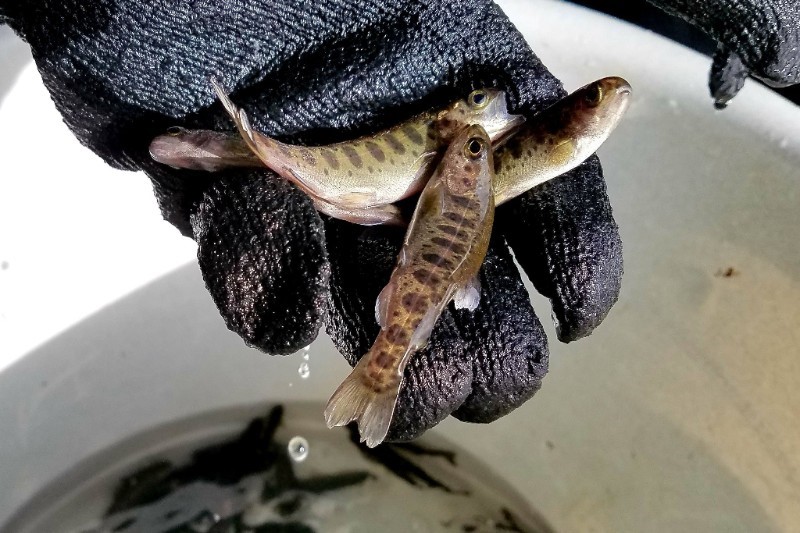Volunteers key in quest for disease resistant wild rainbow trout
As snow piled up outside the Mount Ouray hatchery building late last month, inside a handful of Colorado Parks and Wildlife staff and volunteers from the Collegiate Peaks chapter of Trout Unlimited were huddled over large plastic tubs filled with rainbow trout swimming in 50-degree spring water.
For six hours that snowy day, the heavily-bundled volunteers repeatedly reached inside the buckets with double-gloved hands, dipped out a 3-inch trout and used scissors to snip off the tiny left pelvic fin. Then they dropped the squirming fish into a concrete raceway in the hatchery and grabbed another from the bucket, stopping occasionally to warm themselves next to a propane heater.
The snipping went on for four days until 20,000 trout had sacrificed a pelvic fin for science. The fish will be released in April into the Arkansas River downstream of Salida. When CPW biologists conduct surveys on the river, they’ll be able to identify these fish as unique and determine their rate of survival.

CPW wants to track them because these are special rainbows. They are the spawn of wild rainbows from the Gunnison River – rainbows that have somehow resisted succumbing to the deadly outbreak of whirling disease that ravaged Colorado’s rainbow trout population after it first erupted in the 1980s.
The effort of precisely marking 20,000 small fish was undertaken because CPW needs to know if the Gunnison River rainbows can establish themselves in the Arkansas and other rivers around the state.
Restoring to the Arkansas and other streams a wild, naturally reproducing rainbow trout that is resistant to whirling disease would be a huge wildlife conservation victory for CPW. So snipping a pelvic fin, which does not hurt the mildly sedated fish, is an important part of this effort.
By 1997, Colorado’s wild rainbow trout population essentially vanished and brown trout, which are more resistant to whirling disease, took over most of the state’s major rivers. Ever since, CPW aquatic research scientists and biologists have worked to combat whirling disease and re-establish wild rainbow trout in Colorado.
The effort included spending more than $13 million to clean up infected hatcheries and convert them to spring- and well-water rather than surface sources.
CPW has been trying to create a wild reproducing population of rainbow trout in the Arkansas and other major Colorado Rivers for decades. There have been several obstacles in the Arkansas River including competition with brown trout, river flows and whirling disease, which is present in the river. These Gunnison River rainbows have shown resistance to the disease. This would be a big breakthrough if this project succeeds. — Josh Nehring, senior aquatic biologist in the Southeast Region
CPW biologists will stock the fish in a few weeks and return in October to survey the Arkansas to try to determine if and how many of the wild rainbow survived the summer.
SPREAD THE NEWS
COMMENT, Like, Follow & SHARE @I70Scout
CURRENT EDITION
WEATHER & TRAFFIC PUZZLES RECENT NEWS ADVERTISE WITH US

Leave a Reply